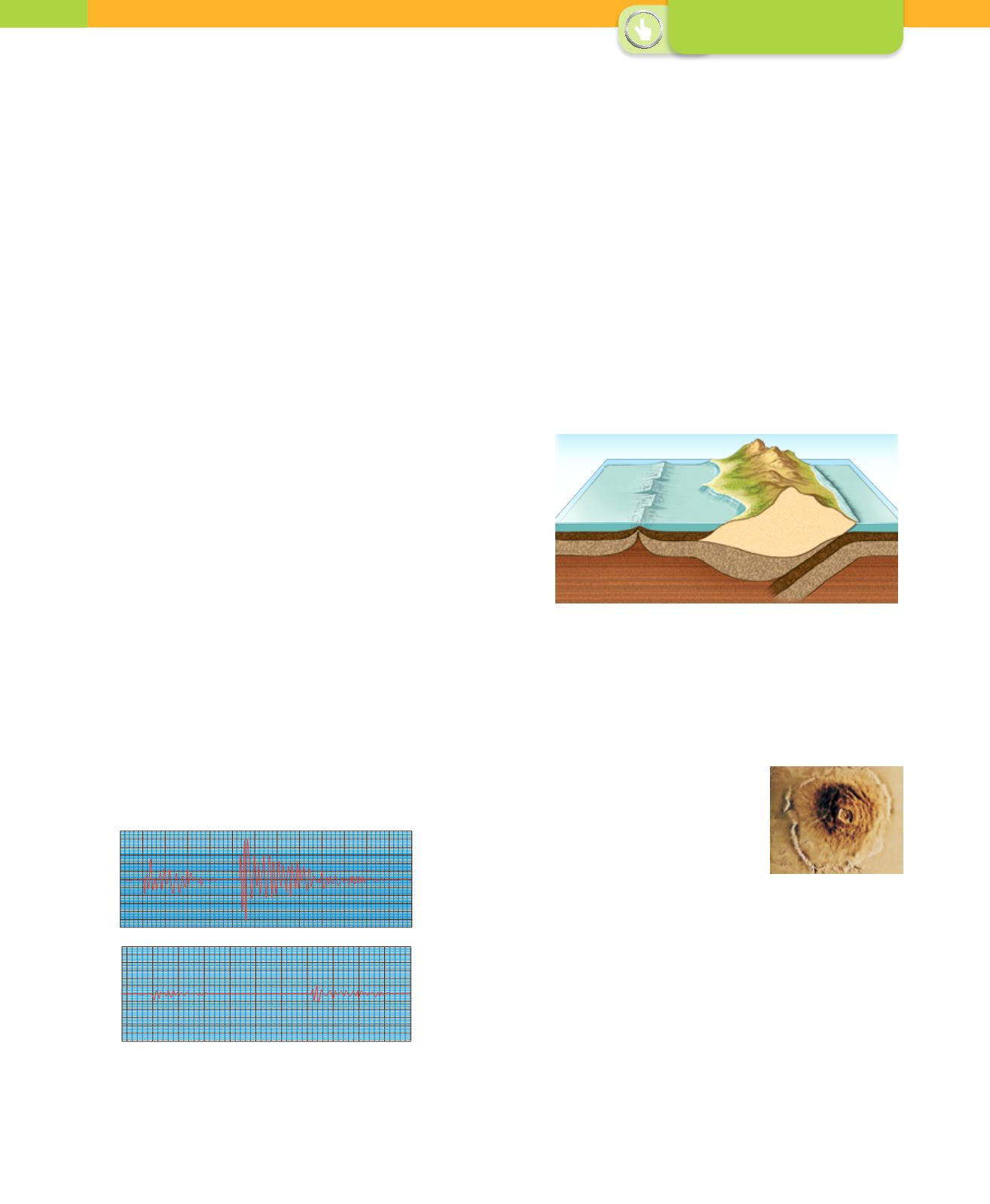
18
Relief and its evolution
48.
What two types of crust are found on the Earth? In
your notebook, write two differences between them.
49.
Is relief unalterable or does it change over time?
Explain your answer and give examples.
50.
In your notebook, name and define the main
features of the relief of the ocean floor.
51.
Explain how the plates contributed to the
formation of mountain chains.
External and internal geological processes
52.
What different roles do internal and external
processes play with respect to relief?
53.
What are the different engines that drive internal
and external processes?
54.
Differentiate between the concepts of agent and
geological process and give practical examples.
55.
State three consequences of the movement of the
lithospheric plates for relief.
56.
What are the convection currents that exist below
the lithosphere? What role do they play with
respect to the plates?
57.
Explain the role that gravity plays in the actions of
internal and external agents.
58.
Calculate the temperature that would exist in the
centre of the Earth maintaining the geothermic slope
of 30ºC/kmon the surface. Do you think this is possible?
Manifestations of the Earth`s internal
energy
59.
In your notebook, define the following
concepts:
epicentre
,
crater
,
magma chamber
,
hypocentre
,
seismogram
.
60.
Look at the two images of the same earthquake.
a)
What are they called? What do they represent?
b)
Identify, on one of them, the two types of internal waves.
c)
Which one is registered closer to the epicentre? Give two
reasons.
61.
Whichareas of theplanet have themost earthquakes
and volcanoes?
62.
Name three large lithospheric plates. What plate
does the Iberian Peninsula belong to? And the
Canary Islands?
63.
What are faults and what role do they play in the
origin of earthquakes?
64.
What is the Ring of Fire in the Pacific Ocean?
65.
What types of movement can exist between two
plates? What happens in each case?
66.
Find out what two types of surface waves exist and
what movement they produce on the Earth’s surface.
67.
Copy this diagram in your notebook and label
where superficial and deep earthquakes and
volcanoes can be found.
Volcanic activity and relief
68.
Which material is more viscous and which is more
fluid: jam or oil? What type of lava is associated
with each of these properties?
69.
In your notebook, name the solid materials that
volcanoes eject, in order from smallest to largest.
70.
Mount Olympus onMars is 25 km
high and 600 km in diameter.
It is the biggest volcano in the
solar system. What type of
volcano do you think it is? What
would the lava ejected be like?
71.
In your notebook, match each one of the
following characteristics with a shield volcano or a
stratovolcano:
a)
It ejects thick lava.
b)
It has a concave profile and is very steep.
c)
It ejects fluid lava.
d)
It is formed mostly of lava.
e)
Its eruptions are quite small.
72.
Find some example of roques in the Canary Islands
and explain their origin.
73.
Most of the Columbretes Islands, located off the
Castellón coast, are ring-shaped. Explain why.
CONSOLIDATION
0 10 20 30 40 50 60 70 80 90
0 10 20 30 40 50 60 70 80 90 100
250
150
0 mm
150
250
250
150
0 mm
150
250


